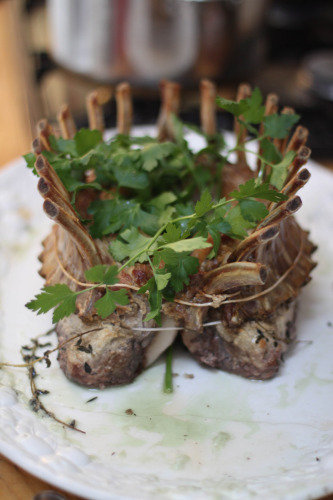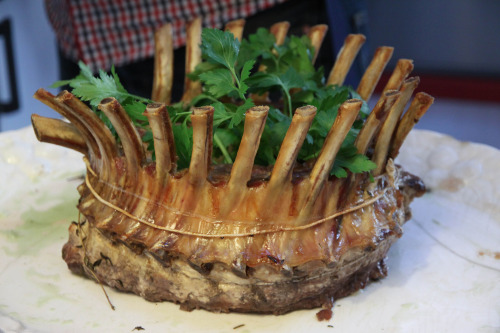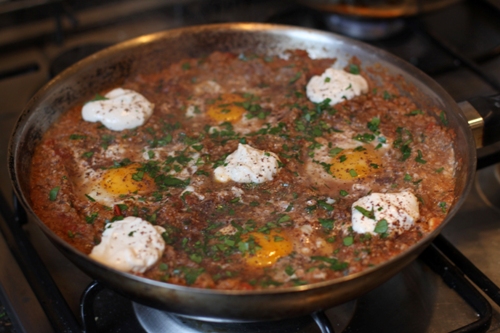A few weeks ago we hosted a BBQ and moonlit cinema in Jenny’s magic garden*. It was magical.
My contribution to the feast was two salads, a fig and goats’ cheese salad and this heritage tomato salad. I was working on Borough market during the day and I couldn’t walk past this colourful and vibrant array of tomatoes:
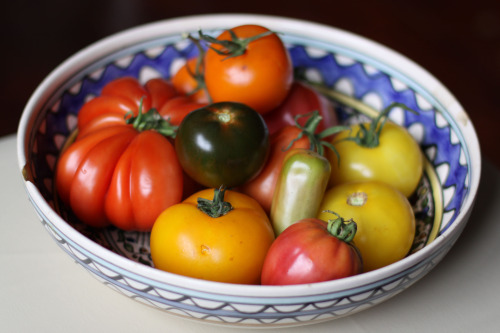
This salad is so simple it doesn’t really warrant a recipe. It is all about the tomatoes, with minimal interference from other extras. If you want to keep things really simple you could skip the Dijon and onion.
I used sherry vinegar, cause it is my current favourite, but I also like balsamic or red wine vinegar. What’s your favourite? Use that.
I recommend tossing the onions and tomatoes together half an hour before you dress the salad as it gives the tomatoes a great flavour.
It was a pity that it was dark by the time I served it because half the fun is seeing all the different shapes and colours. This photo doesn't really do it justice:
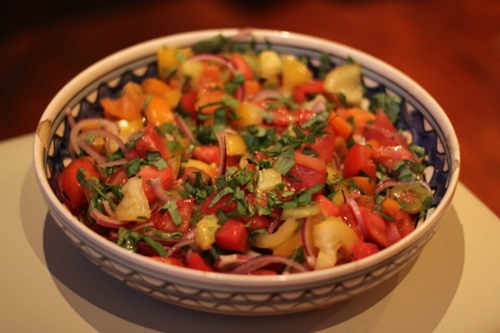
I made this salad for 12 people as a side. I have halved the quantity here, so this recipe should serve 4 as a starter or 6 as a side dish.
Ingredients
750g heritage tomatoes
½ small red onion
3 tbsp extra virgin olive oil, or to taste
2 tbsp sherry vinegar, or to taste
1 tsp Dijon mustard
Salt and freshly ground black pepper, to taste
Handful basil, roughly chopped
Method
Side salad
Chop or slice the tomatoes into whatever shape you fancy. Slice the onion into thin, half moons. Toss them together in a large bowl. Cover and leave for half an hour.
Whisk the olive oil, vinegar, Dijon, salt and pepper in a bowl. Pour the dressing over the salad, add the basil and toss together. Taste and adjust seasoning as necessary.
Starter
Slice the tomatoes into full circles. Arrange it on 4 plates in concentric circles. Slice the onion into thin, half moons and sprinkle the onions over the top. Cover with clingfilm and leave for half an hour.
Whisk the olive oil, vinegar, Dijon, salt and pepper in a bowl. Drizzle the dressing over the salads just before serving and sprinkle the basil over the top.
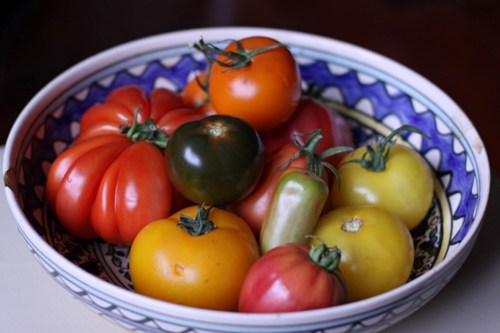
* My flatmate Jenny does the gardening at our house. She makes it look so pretty and colourful, it’s enchanting. One of our friends, Fran, crowned it the magic garden. He’d been zoning out in a deckchair for an hour or so when he finally came to and declared, “Jen, your garden’s like magic, innit!” It is.
 Thursday, July 7, 2016 at 10:14PM
Thursday, July 7, 2016 at 10:14PM 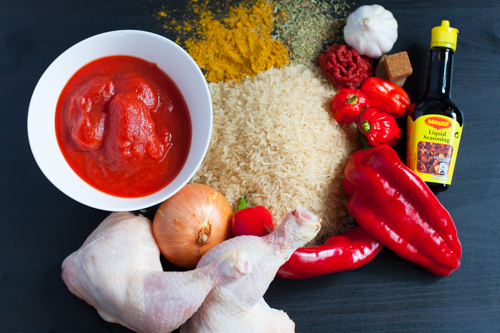
 Vix |
Vix |  6 Comments |
6 Comments | 
